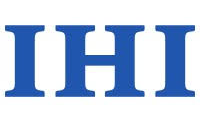In Conversation with John Kedar, Geospatial Strategy Advisor before he interviews world-renowned geospatial expert Vanessa Lawrence at DGI 2021. Interview conducted by Tom Webber, Editorial Director, DGI.

Tom Webber (TW): Thanks John for spending some time with us as we start thinking about some of the lessons learnt from 2020 and issues we may want to consider ahead of the next big DGI Virtual event in February 2021. So, 2020 continues to challenge us all, what have been your observations of how the geospatial intelligence community has been impacted so far?
John Kedar (JK): Whilst it has been an incredibly impactful year, and sadly devastating for some, it has not been detrimental to the geospatial intelligence community. Epidemiology is in part a geospatial science and the response to COVID-19, from geospatially enabled apps to planning responses has required geospatial people, data and technology to rise to the challenge. They have risen, even though Governments have not always understood or used the potential offered. Geospatial intelligence businesses have perhaps not fared as badly as other businesses too, as accelerated digitization has led to new opportunities. On the space-side there have been delays in launches impacting some satellite remote sensing companies.
TW: Can you see any opportunities arising from the crisis for geospatial intelligence agencies and leaders stepping into new roles?
JK: Some governments have tracked people using wide-ranging technologies and location. But the geospatial sector in the Western World has not contributed new ideas as much as it likes to state publicly. It could of course enable detailed tracking of people; with AI techniques, social media and GPS enabled phones it is absolutely possible for smartphone apps to show homes with Covid infected individuals with some degree of certainty, but we have seen privacy take priority. Now doubt both the capability and the potential legal challenges will be considered by security agencies. As for new roles, Covid responses have shown that geospatial leaders should have the confidence to spread the community’s wings and firmly merge our offerings with the wider data and analytics community and start to lead that community. Customers want knowledge and that comes from multi-source analytics and data, with location playing a major part.
TW: Do you envision new or different partnerships emerging that might have unexpected influences and outcomes for allied nations?
JK: The geospatial intelligence art of the possible was demonstrated by analytical companies in USA and Canada who had spotted ‘something untoward’ emanating from Wuhan before the World Health Organisation had announced anything. These commercial offerings provide new partnership opportunities for Governments but also pointers for Government agencies.
TW: Thinking about individual geospatial intelligence professionals, what would you say are the implications of the crisis for the future of skills, professional development, training and education going forwards?
JK: At the working level little needs to change. But in developing management we can make strides to develop broader thinking across all aspects of geospatial intelligence, of wider data communities and of wider data science. Critically it has got to take us closer to users and their problems; only then do we have the context to deliver knowledge. Leaders must also have the confidence to strike early with potential solutions.
TW: With an eye to the future, what would you say are the key trends to keep watch for in geospatial intelligence as vaccines are deployed and the world returns to ‘normal’
JK: Firstly that countries that have handled Covid best, for whatever reason but invariable incorporating geospatial technology, tend to be located in the Asia Pacific leading to further realization that the global centre of gravity moves East. The region also saw greatest acceleration in digitization. Covid will be with us for many years. Secondly that spatially modelling resurgence based on vaccine uptake amongst other factors will support preventative decision making . From a commercial perspective, the health market will see greatest increase in sales of AI and geospatial technologies. More strategically the increase in home-working will see greater use of web geospatial technologies.
TW: Thanks for your thoughts and we look forward to you interviewing world-renowned geospatial expert Vanessa Lawrence at the main DGI Virtual event next Feb 2-4. Until then, keep safe and well!
About John: John Kedar is an experienced, versatile and pragmatic senior advisor to governments, director, executive and geospatial expert. He offers independent strategic advice to enable nations, institutions and cities gain economic, social and environmental value from a location-based approach to decision-making. His broad background and recent contributions to global thinking in this rapidly developing domain help clients take an integrated approach across the many aspects of governance, technology and people.
John served a career in the UK armed forces, working across the World in engineering, geospatial, government policy and leadership roles. This included directing its deployable geospatial capabilities, a key component in defence and security decision-making. More recently he spent six years in Ordnance Survey, initially opening new international markets and then paving the way for long-term growth by building Ordnance Survey’s global reputation and helping to lead major United Nations initiatives. This experience extends into the charitable sector, where amongst other roles he was vice-chair of a leading UK charity.
In his advisory role, John brings a unique combination of global experience from government policy development, the decision-making community, the geospatial data industry and from the United Nations. He champions "the power of where?"































